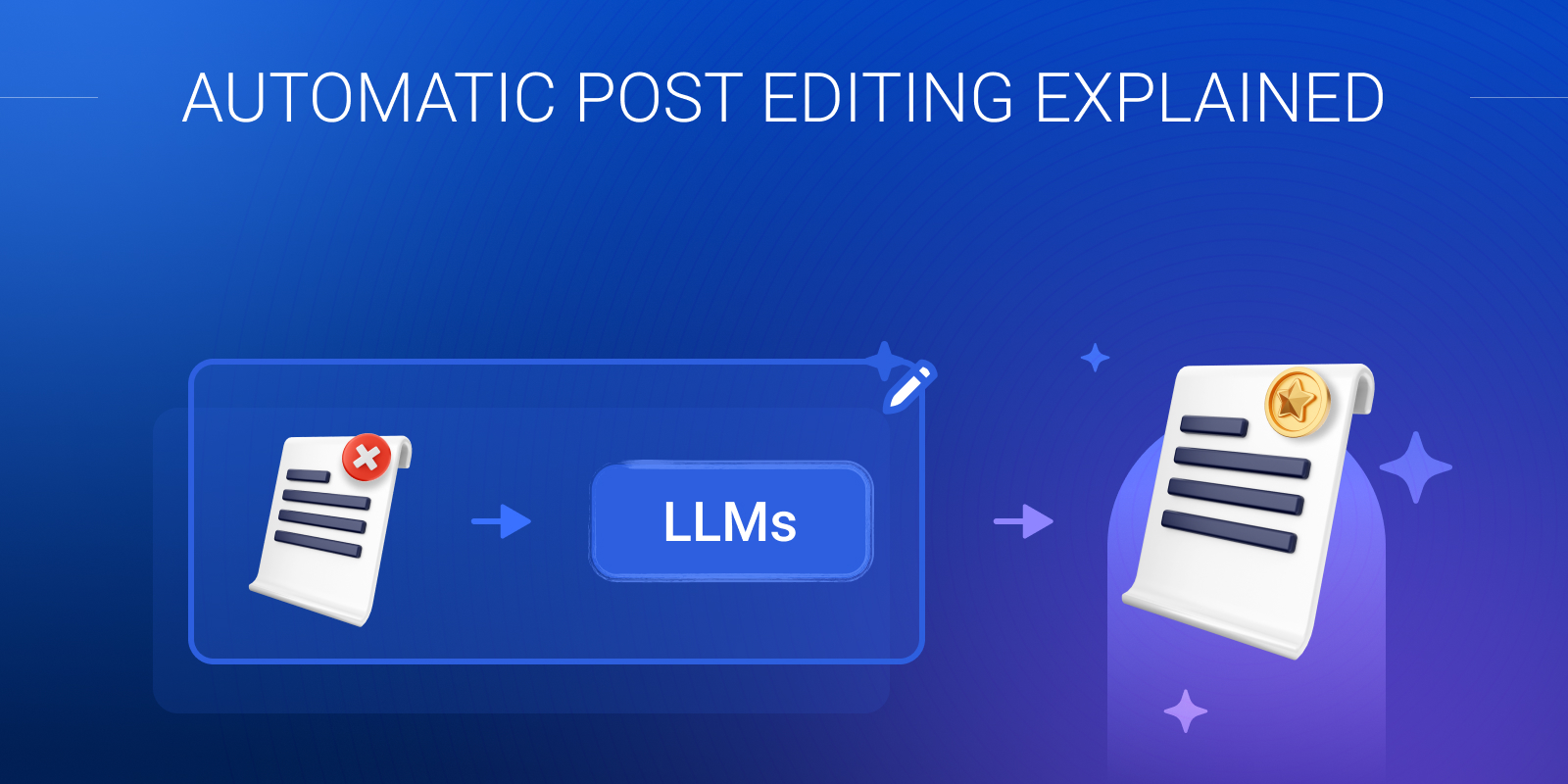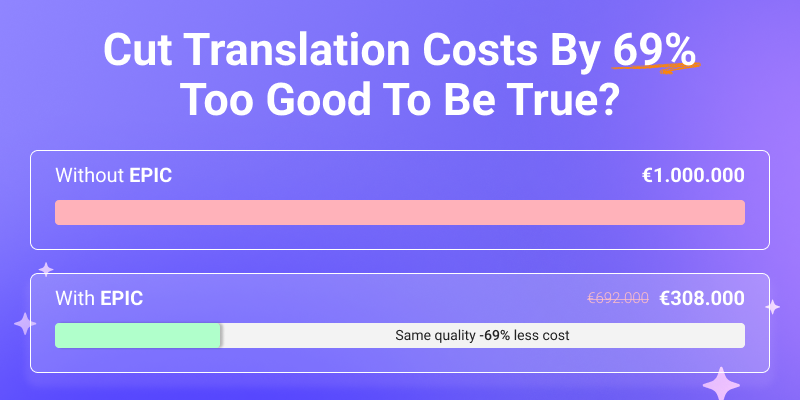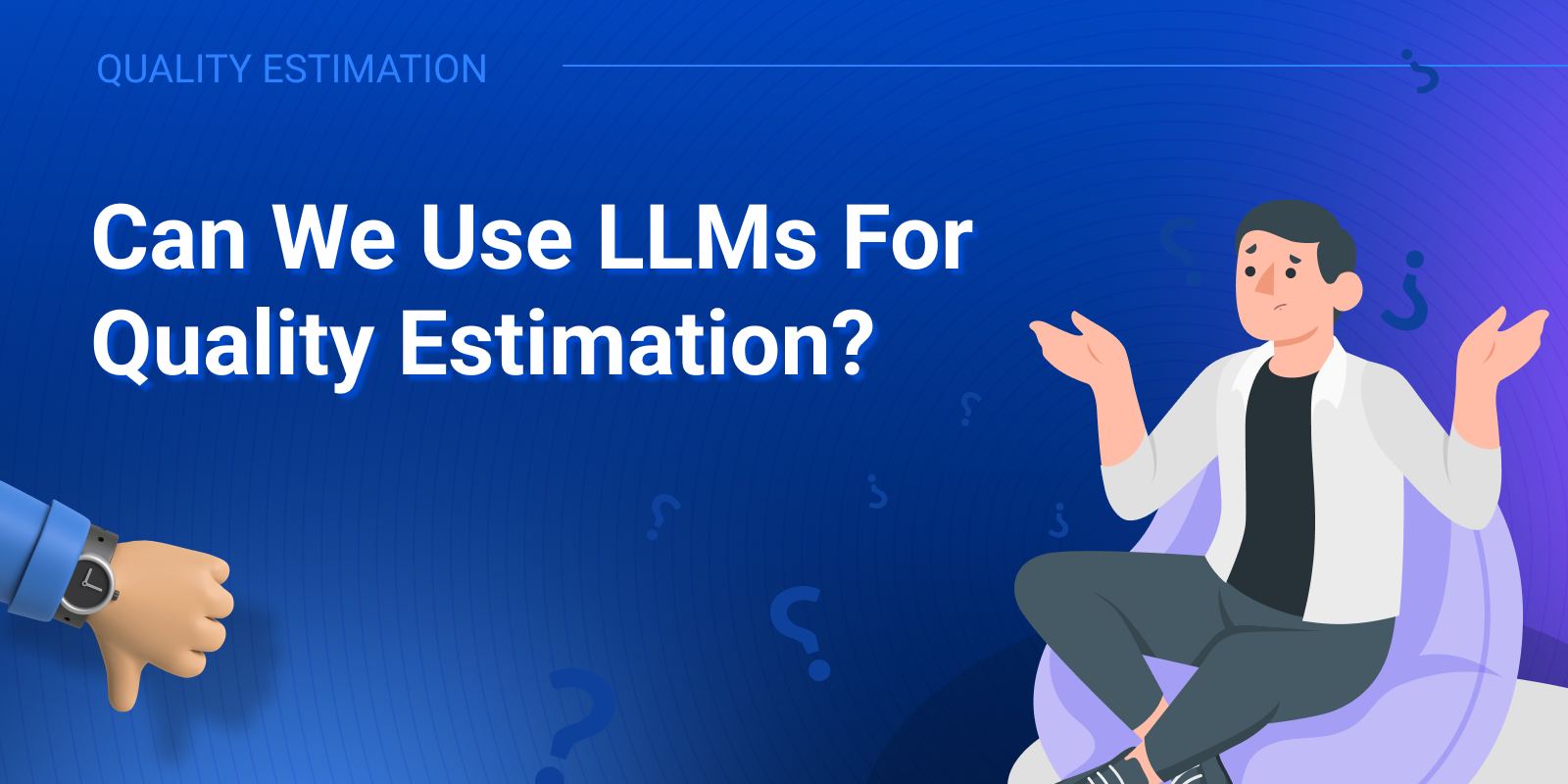Automatic Post-Editing Explained: How TAUS Uses LLMs to Fix MT Output

Learn how TAUS uses LLM-powered Automatic Post-Editing and Quality Estimation to automate MT review, cut costs, and boost translation quality.
In today’s localization workflows, much of the translation is already handled by machines, but the real bottleneck often lies in what comes after: quality evaluation, review and post-editing. These steps are critical for quality, but they’re also time-consuming, costly, and difficult to scale.
That’s why at TAUS, we’re rethinking this part of the pipeline, automating review and editing in ways that preserve quality without adding overhead.
Quality Estimation and Automatic Post-Editing with Intelligence and Confidence
Manual post-editing and quality review remain some of the most resource-intensive components in large-scale translation programs. Whether outsourced to vendors or managed in-house, human review introduces variability, slows down time-to-market, and makes it difficult to scale across language pairs and content types. What’s more, much of today’s MT output is already good enough, which means that you can skip the unnecessary human review and cut the waste. Automating these steps can help reduce translation costs by at least 50%.
The TAUS EPIC API is built for organizations that want more control over translation quality in a fully automated workflow. EPIC brings together two powerful components:
- Quality Estimation (QE): An AI-based scoring model that predicts the quality of a machine-translated segment without human reference. This enables smarter decisions—such as whether a segment is good enough to publish, or needs revision.
- Automatic Post-Editing (APE): A corrective mechanism that improves MT output automatically using Large Language Models (LLMs), only when QE indicates that the original segment does not meet your quality threshold.
Together, these components form a feedback loop that transforms how you manage and optimize translation output at scale.
How Automatic Post-Editing Works?
The full EPIC solution consists of the following four steps:
- QE Scoring: TAUS Quality Estimation analyzes each machine-translated segment and assigns a score between 0 and 1, predicting its likely quality without needing a reference translation.
>A Real-World Guide to QE Scoring Report - Threshold-based Routing: You define a threshold score. Segments that fall below this value are flagged for post-editing.
>Read more on setting threshold scores in TAUS Quality Estimation Benchmarking Report - Automatic Post-Editing: The flagged segment is sent to the LLM to generate a corrected translation. Prompts are designed to focus on accuracy, fluency, and alignment with the source.
- QE Validation: The new suggestion is scored again using QE. Only if it scores higher than the original segment is it returned to the user. Otherwise, the original MT output is retained and manual review is needed.
Let’s take a closer look at step 3, Automatic Post-Editing, to understand how this process works and why it matters.
What is Automatic Post-Editing?
Automatic Post-Editing (APE) is the task of identifying and correcting recurring errors in machine-translated output to improve its quality, without requiring a human in the loop.
In traditional workflows, linguists manually review and edit MT output. With APE, this work is offloaded to an LLM, which is prompted to rewrite only the segments that fall below a defined quality threshold. The result is a high-quality suggestion, generated instantly and validated with an automated score.
APE is ideal for teams that want to reduce the need for human review, improve consistency, and maintain high output quality across a wide range of content and languages.
APE in Action
To make this process more concrete, here’s an example of how APE works in a real-world scenario. The segment below was flagged by QE as falling below the set quality threshold. Then the LLM was prompted to improve it, and the new version scored higher, qualifying it for automatic replacement of the original output.
|
Original Translation |
EN: Generative artificial intelligence (AI) describes algorithms (such as ChatGPT) that can be used to create new content, including audio, code, images, text, simulations, and videos. IT: L'intelligenza artificiale (IA) generativa descrive algoritmi (come ChatGPT) che possono essere utilizzati per crre nuovi contenuti, tra cui audio, codice, testo, simulazioni e video. |
|
Indicated QE Threshold |
0.95 |
|
Original QE Score |
0.90 |
|
APE Suggestion |
L'intelligenza artificiale (IA) generativa descrive algoritmi (come ChatGPT) che possono essere utilizzati per creare nuovi contenuti, tra cui audio, codice, immagini, testo, simulazioni e video. |
|
APE Remarks |
Fixed a typo in the word 'crre' to 'creare' and added 'immagini' for consistency with the source text. |
|
QE Score after APE |
0.95 |
Accuracy, Not Assumptions: How We Ensure APE Quality
The APE process isn’t a black box. At TAUS, we continuously test and validate our APE process. We benchmark commercially available LLMs for quality, latency, and cost-effectiveness, and we refine our prompting techniques to minimize risks like hallucination and stylistic inconsistency.
That said, we believe that running controlled pilots is essential. Every use case is different. We recommend that customers start with small-scale evaluations and test APE performance on their own content and language pairs before moving into production. This helps teams calibrate expectations and fine-tune thresholds based on real-world data.
No Setup, No Training—Just Start
APE via the EPIC API is designed for ease and speed. You don’t need to train custom models. You can start using it immediately, simply by connecting to the API and setting your quality threshold. There’s no setup time, no minimum volume, and no need for fine-tuning.
Yet the flexibility remains. You control the thresholds, decide when APE is triggered, and choose how the output is used, giving you the perfect balance of automation and control. Of course, customization of the models is possible if the use case, domain or content type requires this.
Rethinking Post-Editing for the AI Era
The question isn’t anymore whether MT is “good enough”. It’s whether the way we manage and review translations is scalable, cost-effective, and future-proof. By combining predictive scoring (QE) with intelligent correction (APE), EPIC empowers teams to deliver faster, more consistent, and higher-quality translations—without expanding your review teams or sacrificing control.
If you're ready to take your MT workflow to the next level, sign up for a free trial for EPIC now.

Anne-Maj van der Meer is a marketing professional with over 10 years of experience in event organization and management. She has a BA in English Language and Culture from the University of Amsterdam and a specialization in Creative Writing from Harvard University. Before her position at TAUS, she was a teacher at primary schools in regular as well as special needs education. Anne-Maj started her career at TAUS in 2009 as the first TAUS employee where she became a jack of all trades, taking care of bookkeeping and accounting as well as creating and managing the website and customer services. For the past 5 years, she works in the capacity of Events Director, chief content editor and designer of publications. Anne-Maj has helped in the organization of more than 35 LocWorld conferences, where she takes care of the program for the TAUS track and hosts and moderates these sessions.
 by Ningxuan Guo
by Ningxuan Guo


